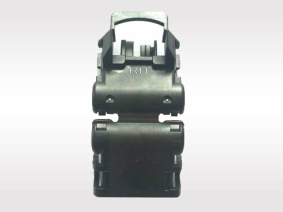The basic knowledge of stamping die terminology is as follows:
1. Hemming
Flanging is a stamping process in which the edge of the working part is rolled into a closed circle. The axis of crimping circle is linear.
2. Fringes
Crimping is a kind of stamping process that the upper edge of the hollow part is rolled into a closed circle.
3. Drawing
Drawing is a kind of stamping process which changes the flat blank or working part into curved surface. The curved surface mainly depends on the extension of the material at the bottom of the punch.
4. Stretch bending
Stretch bending is a stamping process in which the bending deformation is realized under the joint action of tension and bending moment, so that the whole bending cross section is subject to tensile stress.
5. Bulging
Bulging is a stamping process in which hollow or tubular parts are expanded along the diameter. Cutting and cutting is a stamping process which divides the forming process into several parts.
6. Leveling
Leveling is a stamping process to improve the flatness of local or integral plane parts.
7. Undulating forming
It is a stamping process that depends on the extension of material to form local depression or bulge. The change of material thickness in relief forming is unintentional, that is, a small amount of thickness change is formed naturally in the process of deformation, not the requirement specified by design.
8. Bending
Bending is a kind of stamping process that uses pressure to make material produce plastic deformation, so that it is bent into a certain curvature, a certain angle shape.
9. Chiseling
Chiseling is the blanking or punching process by using the chiseling die with sharp edge. There is no lower die for chiseling, only flat plate is padded under the material, and most of the punched material is non-metallic.
10. Deep hole blanking
Deep hole punching is a punching process when the hole diameter is equal to or less than the thickness of the material to be punched.
11. Blanking
Blanking is a stamping process that separates materials along the closed contour. The separated materials become workpieces or process parts, most of which are planar.
12. Necking
Necking is a stamping process in which the open part of a hollow part or tubular part is pressurized to make it smaller.
13. Plastic surgery
Shaping is a stamping process that depends on the flow of materials and changes the shape and size of working parts in a small amount to ensure the accuracy of the workpiece.
14. Renovation
Trimming is a stamping process in which a small amount of material is cut off along the contour or inner contour to improve the edge finish and verticality. The renovation process generally also improves the dimensional accuracy.
15. Flanging
Flanging is a stamping process in which the material is turned into a side flange along the inner hole.
16. Flanging
Flanging is a stamping process in which the material is turned into a side short edge along the contour curve.
17. Deep drawing
Deep drawing is a kind of stamping process that changes the flat blank or process part into hollow part, or further changes the shape and size of the hollow part. During deep drawing, the core part is mainly formed by the material outside the bottom of the punch flowing into the female die.
18. Continuous drawing
Continuous drawing is a kind of stamping method in which the required shape and size are gradually formed through multiple drawing with the same die (continuous drawing die) on the strip (coil).
19. Thinning and drawing
Thinning drawing is a kind of drawing process that further changes the shape and size of the hollow process piece and thins the side wall intentionally.
20. Reverse drawing
Reverse drawing is a kind of drawing process which turns out the inner wall of hollow process piece.
21. Differential temperature drawing
Differential temperature drawing is a kind of deep drawing process which uses heating and cooling means to make the temperature of the part to be deformed far higher than that of the deformed part, so as to improve the deformation degree.
22. Hydraulic drawing
Hydraulic deep drawing is a kind of drawing process which uses liquid in rigid or flexible container to replace punch or die to form hollow parts.
23. Reinforcement
Rib pressing is a kind of undulating forming. When the local undulation appears in the form of ribs, the corresponding rolling forming process is called rib pressing.






